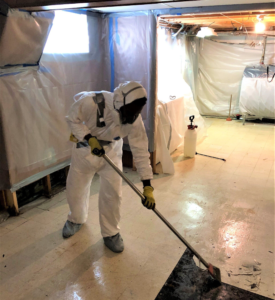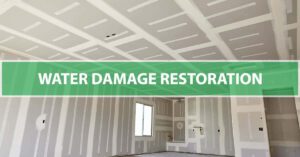Brick Layer Perth WA constructs and repairs walls, partitions, arches, sewers, and other structures using clay bricks, concrete blocks, and stone. They bind these materials with mortar. They consult building plans and make measurements.
Many bricklayers choose to pursue an apprenticeship, which combines classroom instruction with on-the-job training. Some colleges offer certificate programs.

Bricklayers construct walls, partitions, fireplaces, and chimneys using various building materials, including clay bricks and concrete blocks. They bind these materials with mortar to create strong and durable structures. Masonry is a trade that requires a high level of skill and knowledge to achieve success. A successful bricklayer must be able to read blueprints, work from heights, and use construction tools such as a rake and trowel.
The most common material used by bricklayers is cement mortar, which is a mixture of sand and water with a chemical binder. The cement mortar must consistently ensure a strong bond with the bricks. The type of bricks used also depends on the project. Some may be made of recycled materials, while others are specially designed to enhance the visual appeal of a structure.
In addition to cement, bricklayers often use various other construction materials such as glass, gypsum, and terra cotta blocks. Masons must be able to work with these materials and mix them with water to make the mortar they need for their work. They must also be able to use measuring and positioning tools to complete their work, such as plumb bobs and gauge lines.
Some of the main responsibilities of a bricklayer include laying and repairing veneer and full brick construction, walkways, patios, and fireplaces, as well as refurbishing decorative stonework and erecting chimneys. Other tasks may involve reading and following blueprints, mixing mortar, sealing foundations, and working with damp-resistant materials. Other duties include constructing and repairing archways, sewers, and other structures.
Much of the work carried out by bricklayers is outdoors and depends on suitable weather conditions. They must have good physical health as the job is physically demanding and involves standing for extended periods. It’s also important that they have good manual dexterity and aren’t afraid of heights.
Masons usually keep hand and power tools in their kits, such as hammers, chisels, and masonry saws. They’ll also have a variety of clamps to hold the bricks in place while they’re being laid and several different bricklaying profiles that will help them spread bricks evenly.
Bricklaying is a very manual process and requires a great deal of skill and knowledge. Bricklayers use several tools to make their work easier. One of the most important tools is the brick trowel. This tool has a flat face and is designed for spreading cement onto the brick. There are several different types of trowels for other purposes, such as a finishing trowel for smoothing out the surface of the cement and a flooring trowel with a pointed face to fit into corners.
The bricklayer also uses various hammers for different tasks. The lump hammer is a very versatile hammer that can be used to chip away at bricks or to break down old mortar and brickwork. A cold chisel is another useful tool for the bricklayer; this is a slim hammer with broad blades that can chip into masonry. A bricklayer’s line and pins are also a key part of the bricklayer’s kit; these act as guides to help build walls straight and accurately.
A spirit level is also a very important tool for the bricklayer. This is a device that is used to indicate whether or not a surface is level or plumb. A spirit level is a small glass tube with a bubble floating inside it; when placed on a surface, the bubble will move around depending on how level or plumb that surface is.
Another essential tool for the bricklayer is a folding ruler. This is a very handy measuring device that can be easily transported and can be used in a variety of situations. It is very useful for checking corners and laying out square structures; it is usually made from washable fiberglass to withstand the elements.
The bricklayer also carries a hod, which is a three-sided box that is used to have the bricks while they are being laid. They also use a toolbox to store all their hand tools; this is a large container that can be moved around the site and kept clean and safe.
Bricklayers use mortar to construct walls, chimney stacks, and decorative masonry structures like archways. They also refurbish masonry on restoration projects. Bricklayers are skilled in laying bricks and other types of blocks, including concrete blocks and cinder blocks, as well as clay bricks. The skills that bricklayers develop during an apprenticeship include:
- Preparing building materials.
- Mixing and stocking mortar.
- Erecting and operating scaffolding.
- Maintaining safety standards on construction sites.
Masonry construction is a highly precise process that requires years of practice to master. Bricklayers must be able to align and stack bricks and other blocks properly to ensure that the structure is stable. They must also be able to lay bricks and other blocks in various patterns, including herringbone and stack bond.
The ancient Egyptians elevated bricklaying to an art form, crafting magnificent temples and pyramids with precision. In modern times, architects and builders continue to innovate with brick, employing it uniquely. One of the most common uses is to layer bricks in a herringbone pattern, enhancing a building’s structural integrity and aesthetic beauty.
Architects use brick in other ways to express their design goals and reflect the culture of their clients, using a variety of colors and textures to knit together old and new. Atelier Tom Vanhee used contrasting bricks to highlight additions and subtractions at this community center in Belgium. While the building’s overall structure is unified, it allows for light and air to filter through brick pathways to walkways.
There are many techniques for laying bricks, which depend on the type of wall and its load-bearing requirements. For example, a non-load-bearing brick wall might be only half a brick thick, while a load-bearing brick wall might be two bricks thick. Regardless of the technique, bricklayers must be able to accurately estimate and calculate the amount of material needed for a project before beginning work. This will help to avoid waste and unnecessary expenditures. The process is more complicated because bricks are all manufactured in different sizes, so the coordinating dimensions (header face, stretcher face, and mortar bed) must be precisely calculated.
Bricklayer construction requires a lot of manual labor and can expose workers to certain health hazards. Workers are exposed to various substances that can harm their health, including dust, air pollutants, and vibrations. These workers must wear protective clothing and equipment to minimize their exposure. They should also be checked for work-related health problems regularly. In addition, they should practice good housekeeping and cleaning techniques to reduce the risk of accidents and injuries.
Bricklayers use several tools, such as hammers and trowels, along with state-of-the-art power tools, to carry out their jobs. They also use various measuring devices, such as plumb lines and spirit levels, to ensure the bricks are aligned correctly. They must also be extremely attentive and have a keen eye for detail. They must also be able to read blueprints and other technical documents. They may also be required to design or restore monumental masonry, seal foundations, and determine the best construction methods.
While bricklayers can work as part of a construction crew, they often work independently. They perform a variety of talks as part of their job and may be asked to design or restore monumental masonry, use damp-resistant materials to seal foundations, and shape bricks to fit corners. These tasks require special equipment and an understanding of the properties of the construction materials.
A bricklayer’s square scaffold must be erected on firm and level foundations and be at most three tiers. Each tier must be supported by continuous rows of two-inch by nine-inch planks. The fronts of the squares must overlap, and the backs of each row must be nailed or otherwise secured to prevent displacement. The scaffold must also be adequately braced and topped with guardrails.
Bricklayers often use power tools, which can lead to various injuries. These injuries can include facial injuries, lacerations, bruises, eye injuries, and even amputations. In addition, they are at risk of crush injuries. Crush injuries occur when a worker’s body is squeezed between heavy objects, such as bricks or equipment. These injuries can cause serious and life-threatening injuries, such as head injuries, broken bones, and even fatalities.







